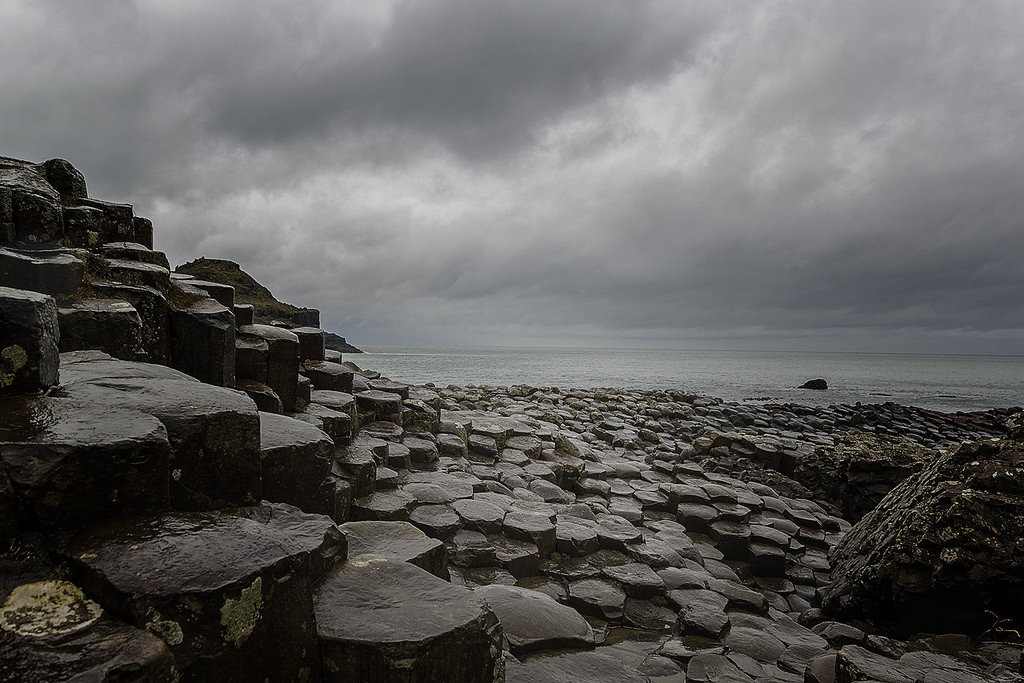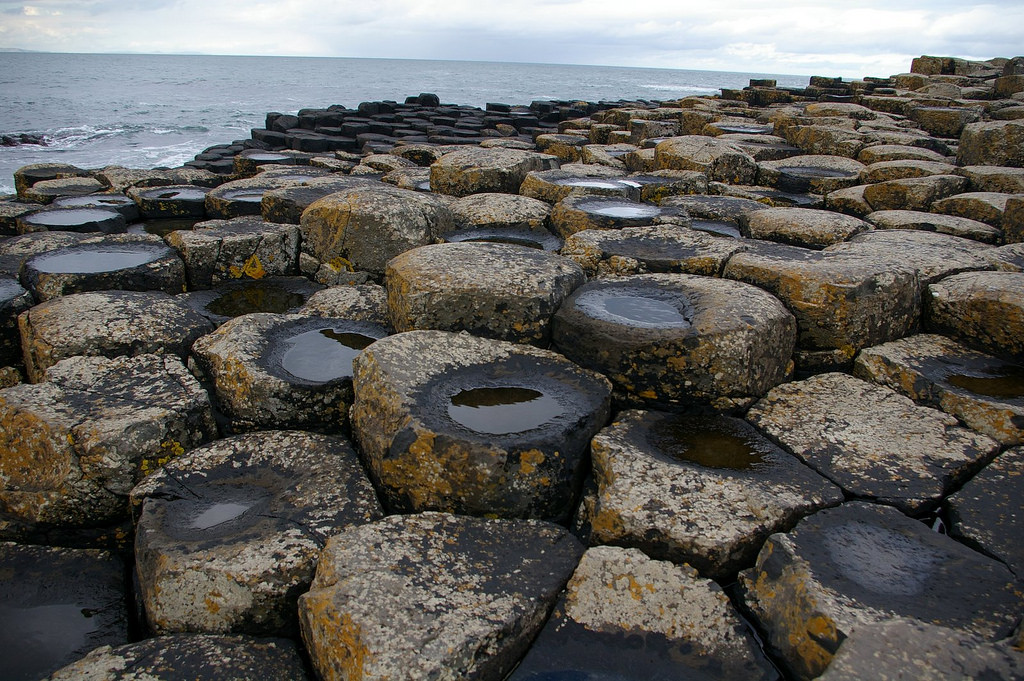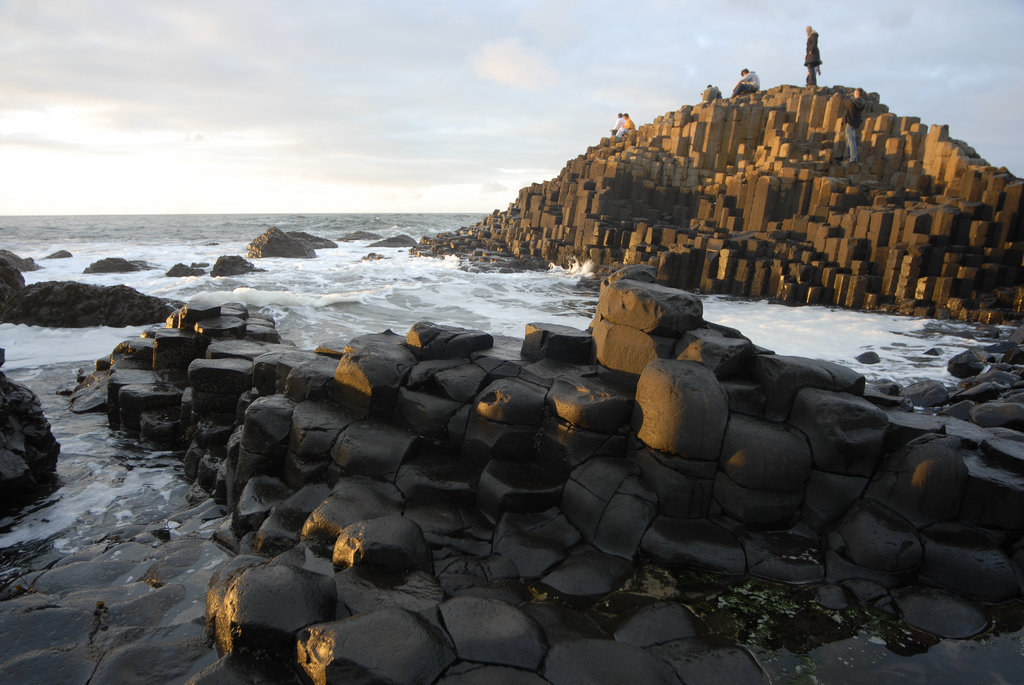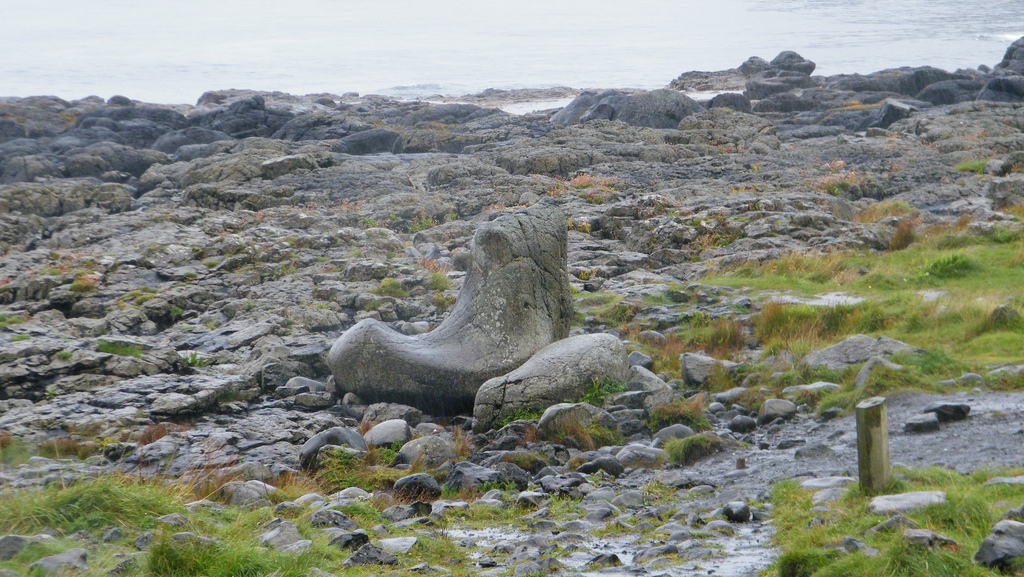In Northern Ireland, the Giant’s Causeway has been the root of confusion for centuries. Dubbed the eighth wonder of the world, it begs the question: is this the work of nature or is there something else at play?

An atmospheric view out to sea from Giant’s Causeway (Photo: Rodrigo Silva via Flickr)
As I left rain sodden Belfast and chugged north in a twelve-seater bus, the scenery started to change. Dreary grey buildings were replaced by crumbling farmhouses. Wide streets flashing with car headlights and thick with chatter were replaced by wide open countryside, where the silence seemed to get sucked into mossy hills and lonely forests.
There was a freshness to this part of Ireland. Even the sky seemed a little brighter, despite the relentless rain that persevered. We wove our way around tight, hairpin bends, travelling for miles along one stretch of road without seeing another speck of civilization.
When we creaked to a halt I was just ready to rock off to sleep, but the piercing “We’re here!” snapped me upright.
Looking around, I thought there must have been some mistake. We had pulled up in a modest car park in front of a stark white building that I was sure harboured sticky red carpets and long eerie corridors. Yes, there must have been a mistake.
I had bumped and bruised my way along country lanes to see the Giant’s Causeway, dubbed the eighth wonder of the world, not an isolated, haunted building in the middle of nowhere. There was nothing I could see that gave away the location as a heritage hotspot.
Despite my own reservations, I bundled down the hill at the side of the hotel, where I was promised the setting of an Irish legend.

A close up of the hexagonal basalt rocks (Photo: Michale Kooiman via Flickr)
I was in the middle of re-adjusting my hood when I reached the bottom and swung a right, where an entirely different landscape to the urban rise of Belfast, the countryside of Northern Ireland, and even the little hotel on the hill greeted me. A sort of basalt gateway led me through into a Jurassic-style plateau, where hulking great hexagonal rocks lay strewn out towards the sea.
Further inland, they grew more severe in shape, their edges unsmoothed by the rough swell of the Irish Sea. Even further inland still, the hexagons rose from a couple of inches high to metres and metres tall, shooting upwards like they’d grown roots and were desperate to reach the sun. If you’ve ever felt tiny in the great arms of nature, you’ll know exactly how Giant’s Causeway made me feel.

Everything about Giant’s Causeway is surreal (Photo: Sebastian Losada via Flickr)
The Backdrop of a Legend
Geologists believe the columns were formed about fifty million years ago after a series of volcanic eruptions. But there’s a better story that goes with the landscape, one that I had no idea existed before I stepped foot in Ireland. While there, surrounded by almost mythical scenery, it didn’t seem as farfetched as I first thought.
The legend starts with Fionn mac Cumhaill (or Finn McCool), an Irish giant. It’s thought he built the causeway so he could walk all the way to Scotland to battle Benandonner, his giant Scottish counterpart.
But, according to the legend, Fionn fell asleep before he got there and impatient Benandonner crossed the causeway in search of his Irish rival. To protect her husband, Fionn’s wife Oonagh tucked him in with a blanket, pretending he was her son. When Benandonner finally discovered Oonagh and the “infant”, he assumed Fionn, as the father, would be twice the size and fled back to Scotland. As he went, he ripped up the causeway to ensure Fionn didn’t follow in hot pursuit.
What might have been a myth I’d have packed away with the likes of Leprechauns and the bogey monster suddenly didn’t seem so impossible as I stood amongst the magnificent basalt columns – my tiny human frame barely registering on them.
I touched the cool, uneven surface of one column, and wondered what kind of things it had ‘seen’. Fifty-million years was a long time to keep watch, and was willing to bet two rival giants weren’t the only anomaly to have passed this way.
Along the trail that visitors are guided along at the causeway, there was a rock that had been eroded into the shape of a giant’s boot – coincidence or not, I was certain there had been some mystical goings-on in the area. Surely, the formulaic pattern of hexagons and the mounds of tight-knit columns weren’t entirely natural. Surely, there was some element of legend, whether it had anything to do with giants or not, at play.

The Giant’s “boot” (Photo: Sean Lucas via Flickr)
It wasn’t just the surreal floor of smooth basalt hexagons that had me flummoxed. The eerie Irish light had a part to play in all of it, too. The clouds were still spitting, but a low sunlight started to peek through the gaps, bathing the causeway in a golden glow. What could have been seen as a dreary collection of grey rocks – not completely dissimilar from the dreary grey buildings of Belfast – had been transformed into an ethereal scene from some kind of ancient fairytale. I half expected Fionn to come lumbering around the corner at any moment.
Back up at the hotel on the hill, where I tucked into a warming Irish stew, I found myself dragged back to reality. My feet were very much grounded on the sticky red carpet, and, as I could no longer see the hunkering blocks of basalt, Fionn and his friends seem like a distant memory – like a dream, or maybe even a legend.
As quickly as it had all started, I was back on the bumpy bus heading Belfast way. We meandered through the same lush countryside as we had on the way there, passing mossy hills and lonely forests. This time, though, they didn’t carry the same appeal. When you’ve experienced the sublime sight of such an incredible natural wonder and walked in the footsteps of centuries-old giants, regular old landscapes simply don’t cut it.